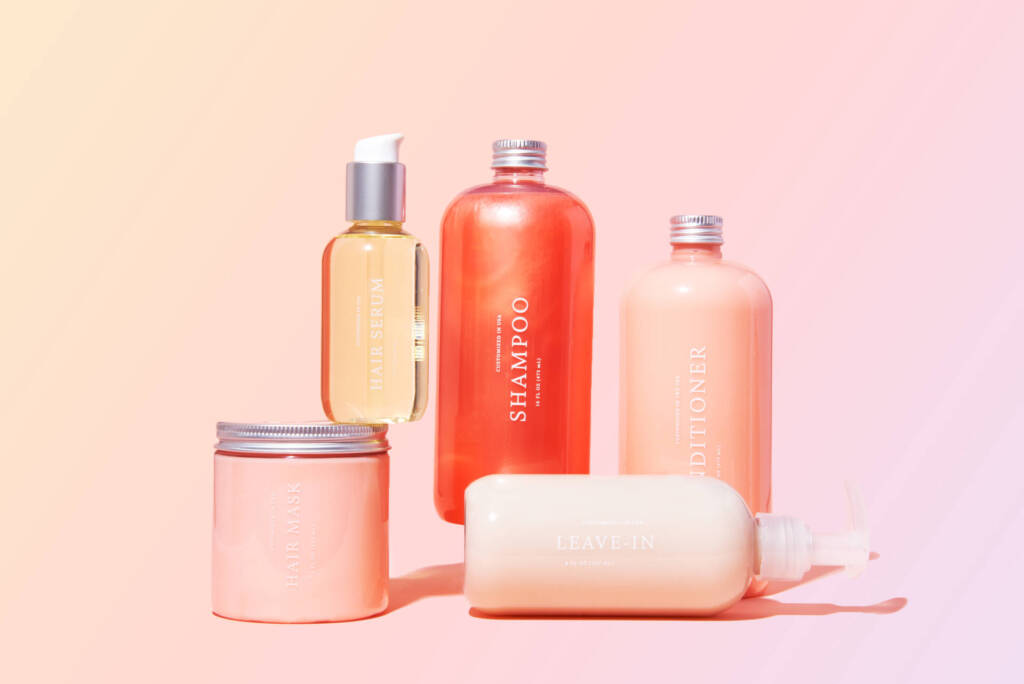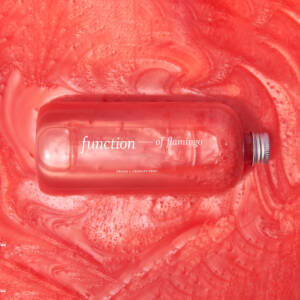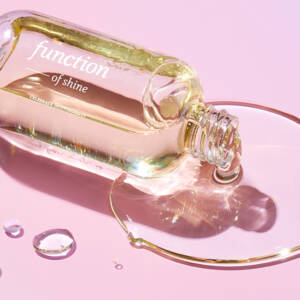From blow-drying and straightening to curling and waving, our hair endures a lot of heat styling on a pretty regular basis. Sure, hot tools, like curling irons, hairdryers, and flat irons can leave our hair looking more stylish and put together. But over time, that heat styling can lead to some pretty serious damage, including dry hair, breakage, and split ends.
Let’s be real though: Getting rid of your heat styling tools for good isn’t going to happen, which is where these helpful haircare tips from our team of hair experts come into play.
By working these easy hacks into your heat styling routine, you’ll not only reduce the likelihood of heat damage but also boost your hair’s overall health, which is something we can all get behind regardless of the length, type, or texture of our delicate strands.
1. Start Off on the Right Foot

As we’ve preached on this blog before, healthy hair starts in the shower. At the end of the day, it doesn’t matter how well you treat your hair if you’re not properly cleansing, hydrating, and conditioning it at the start.
That’s why we always recommend using a high-quality shampoo and conditioner that’s free of sulfates, parabens, and other common ingredients that can strip hair, leaving it dry and brittle.
Along with checking off all of those boxes — and being 100% vegan and cruelty-free — Function of Beauty’s customizable formulas give you the option to add a number of damage-fighting hair goals for your shampoo — deep condition, thermal protection, fix split ends, and replenish hair — so your hair strands can (literally) beat the heat.
2. Create a Protective Shield

No matter your curl pattern — think fine and straight hair or coarse and curly hair — you should never heat style your mane without applying a heat protectant to it first. Think of it this way: You would never head out the door without applying your sunscreen first, right? The same concept applies here if you’re looking to ward off heat damaged hair.
A good-quality heat protectant, like our fully customizable hair serum, will provide a protective shield around your hair cuticles to prevent your hot tools (say, a blow dryer) from causing too much damage. In fact, our award-winning hair serum is proven to thermally protect your mane from damage up to 400 degrees.
Plus, as with all of Function of Beauty products, our lightweight hair serum also gives you the option to add up to five hair goals to your formula (extra thermal protection and anti-frizz, please!) so you can get an added boost of your hair goals throughout the day.
3. Turn Down the Heat

One of the biggest mistakes people make when using a hot iron is turning the heat setting up too high — it will fast-track you to the land of heat damaged hair! While temperatures can vary based on your hair type, it’s typically recommended that you stick within the 200-300 degree range, with finer/thinner hair types keeping closer to the lower end of the spectrum.
Whatever you do, just don’t use your tool’s highest heat setting, as that’s when all hair textures will start to see signs of heat damage no matter how much heat protectant is applied.
4. Invest in a Weekly Hair Mask

While this is good practice for just about everyone, nourishing hair treatments are especially crucial for those who regularly heat style their locks, or are already struggling with heat damaged hair.
A deep conditioning treatment, like a hair mask, will not only help replenish your hair’s natural moisture after heat styling. Plus, it can help downplay the formation of tangles, to help your hair look and feel smoother once you’re out of the shower.
Simply swap in a conditioning mask on your wet hair in place of your daily conditioner, let it soak in while you wash your face, shave, and so on, then rinse — it’s that easy. Not sure which mask to choose?
Allow us to introduce you to our fully customizable hair mask, which is formulated with ingredients like argan oil, Japanese sake, and jojoba ester oil, to nourish your hair. You can also customize it with other moisturizing add-ons such as beetroot extract and babassu oil. It’s pretty awesome if we do say so ourselves.
5. Follow the “One and Done” Rule
While your temperature setting is certainly a factor to consider when heat styling, it’s also important to consider how many times you’re using your tools on the same section of hair. In general, it’s best to follow the “one and done” rule: one pass over a section of hair and that’s it.
While it may seem like you’re reinforcing the style or direction of the hair, you could actually be causing added damage to your hair shafts. If you find that it requires more than one pass to achieve the style you’re looking for, try turning the temperature up just a bit. Your goal should be to find the lowest temperature setting that still allows you to get your styling done efficiently without risking heat damaged hair.
6. Go For a Trim
Anyone who’s ever had heat damaged hair can likely attest to the split ends that make your hair feel rough. Frayed ends to your tresses can take many forms, such as the basic “Y” shape (the hair strand splits into two parts), and the “feather” and “tree branch” (the hair fiber splinters into multiple parts).
While there’s no way around split ends, damage control is still possible with hair trims (which you should be getting on the regular, anyway). Keep a schedule of your dates with a hairstylist you trust to ensure you’re ridding your mane of split ends. This can help prevent them from traveling up the hair shafts and doing even more damage.
7. Don’t Overdo It

At the end of the day, while we all love heat styling, it’s best to remember that like all good things, it’s about moderation. When you have the chance to give your mane a rest — particularly if you’re already battling with heat damaged hair — let it air-dry.
Air-drying might take longer, but it will save your hair from serious damage in the long run. To speed up the process, you can first dry it with a microfiber towel to soak up the excess water. But remember, gentleness is key here if you want to avoid even more tangles, split ends, and breakage.
In need of some heatless hair styling inspo? Check out some of our favorite no-heat hairstyles to guide your next look!
Buh-Bye Heat Damaged Hair!
Heat damaged hair is a common problem that everyone experiences at least once in their lifetime. Thankfully, there are steps you can take to nip it in the bud.
For instance, hair products like a heat protectant and hair mask should be staples in your haircare routine. On top of that, practice hair-healthy styling habits such as keeping the temperature low on your tools (as much as possible) and going for regular trims.
But of course, all your products and lifestyle tweaks will be for naught if you don’t have a solid haircare regimen in place. If you’re ready to say goodbye to your hair damage once and for all, start by building your customized haircare formula now.





